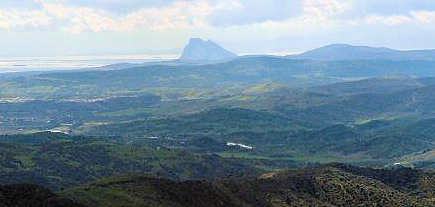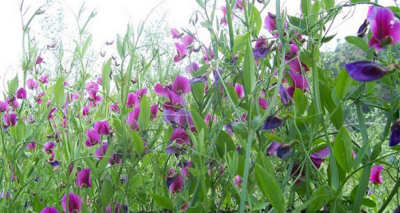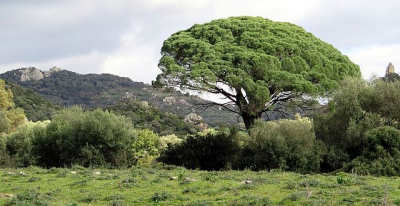ENVIRONMENT
Gaucín, 626 meters above sea level, is the most western point of the Serranía de Ronda, Penibética. Some of its peaks are more than 2000 meters high. Tt is crossed by the Genal, Guadiaro (River of gold, so-called by pre-Roman inhabitants) and Hozgarganta rivers. Gaucín is a natural lookout point from which one can see the Campo de Gibraltar, Algeciras, the Straits of Gibraltar and Africa.
Gaucín is a natural lookout point from which one can see the Campo de Gibraltar, Algeciras, the Straits of Gibraltar and Africa.
The township of Gaucín borders
- to the northeast, Cortes de la Frontera
- to the east, the Sierra Bermeja mountains
- to the west, Jimena de la Frontera (Cádiz)
- to the south, Casares and the Sierra Crestellina
HOW TO GET HERE
ROADS:
Manilva/Sabinillas - approx. 30-35 minute drive from the coastal (N-340/A-7) and about a 25-30 minute drive from the AP-7 toll road exit at Manilva.
Ronda - approx. 40 minutes
Algeciras - approx. 1 hour
Ronda/Jerez - approx. 2 hours
AIRPORTS:
Malaga - approx. 1 ½ hours
Gibraltar - approx. 1 hour
Sevilla - approx. 2 ½ hours
TRAIN:
Gaucin train station is at Colmenar, about a ½ hour drive from the village. Trains leave several times a day to both coastal and inland stops.
BUS:
There are buses from Ronda and Algeciras.
CLIMATE:
Gaucín's benign climate, due to its maritime influence, distinguishes it from other pueblos in the Ronda mountains, which are colder in winter and hotter in summer. Maximum temperature rarely gets above the low 30s (celsius) and the minimum rarely reaches 0.
 FLORA:
FLORA: Many varieties of oak, chestnuts, almonds, St. John´s bread (algarrobo), poplars, elms, willows and pines grow in abundance. Thriving fruit trees include the pomegranate, quince, and fig. Herbs of astounding variety and an exuberance of wildflowers make Gaucín a favored destination for plant lovers.
 ZOOLOGY
ZOOLOGY Mammals: foxes, wild cats, mongoose, martens, badgers, weasels, porcupines, bats, and wild boar inhabit the countryside.
Birds: Gaucín is a major point for the transit of migratory birds. Resident species include Griffon Vulture, Bonelli's Eagle, Crested Lark, Blue Rock Thrush, Dartford Warbler and Cirl Bunting.
 LOS ALCORNOCALES NATIONAL PARK
LOS ALCORNOCALES NATIONAL PARK Los Alcornocales Park, which borders the township of Gaucín, is the largest and oldest forest in Europe. Over 1 million specimens of cork oaks (alcornoques) and over 250,000 gall oaks cover 168,661 hectares. It is a remnant of the great forest that covered the whole of Spain before they began cutting it down in the 16th century to provide wood for sailing ships. Every tree produces more than nine kilos of oxygen a day, and absorbs six of carbon dioxide; thus, the forest is a giant green lung. Deer, wild boar, Rock Martens and Spanish ibex are among the many fauna native to the forest.

